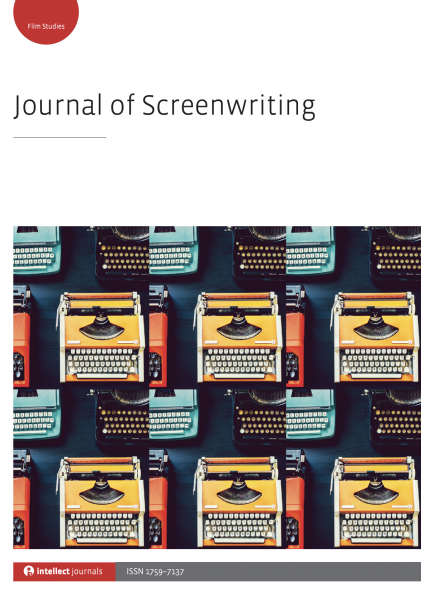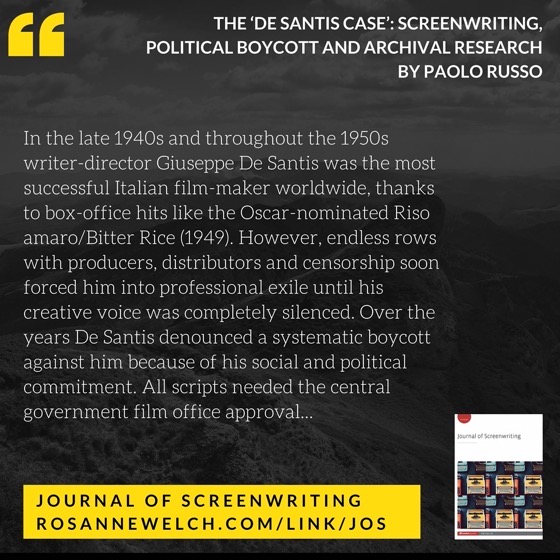Highlighting the articles in the past editions of the Journal of Screenwriting, of which I am the Book Reviews Editor. Hopefully these abstracts will entice you to did a little deeper into the history and future of screenwriting. — Rosanne
Writers Guild Foundation Shavelson-Webb Library and Archive by Miranda J. Banks
This article provides an overview of the resources available at the Writers Guild Foundation Shavelson Webb Library in Los Angeles, California. Included is a history of the library, an explanation of the Writers Guild Foundation’s Archive, and discussion of the library and archive’s extensive holdings. The author details resources available online. The article also offers information on how to prepare for a visit to the library and best practices when conducting research or using the Writers Guild Foundation Library and Archive for scholarly or creative work.
The Journal of Screenwriting is an international double-blind peer-reviewed journal that is published three times a year. The journal highlights current academic and professional thinking about the screenplay and intends to promote, stimulate and bring together current research and contemporary debates around the screenplay whilst encouraging groundbreaking research in an international arena. The journal is discursive, critical, rigorous and engages with issues in a dynamic and developing field, linking academic theory to screenwriting practice.
Get your copy and subscription to the Journal of Screenwriting Today!
* A portion of each sale from Amazon.com directly supports our blogs
** Many of these books may be available from your local library. Check it out!










